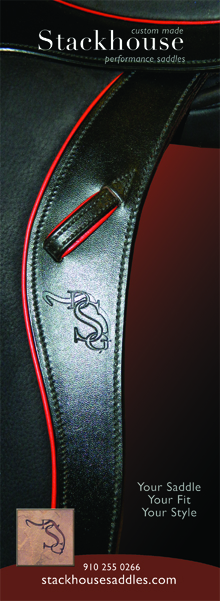Search the Site
Guest Blog post # 102: "Stat!" by Bill Woods
Stat!
It’s what the surgeon in the OR shouts immediately preceding something like, “Get the mop!” So you might think that this is one of those blogs that harps on making your horse sharp, quick, and attentive to the aids. But in this case, NO! This “stat” is short for rheostat, that device on your dining room wall that dims the chandelier for an optimistically intimate dinner or cranks it all the way to a piercing brightness suitable for removing splinters or conducting a Jack Bauer-style interrogation. Most significantly, it allows you to choose any level of illumination in between.
On these posts and in DRESSAGE Unscrambled I’ve often referred to the vending machine analogy—wherein when a horse is properly prepared and on the aids, anything you can reasonably ask for should be immediately available to you without further preparation. Put the money in and when it blinks READY, it’s ready for everything. When you ask and the answer is not forthcoming, the problem usually lies in an incompleteness in your relationship in what last you were doing.
A subset of this principle lies in what Robert Dover so eloquently nasalled at a USDF symposium: “Remember, people, in dressage adjustability is everything!” Frame, balance, energy, and tempo among other qualities, should all be available in increments that you, not your horse, choose. An “all or nothing” reaction indicates a “doing the tricks” relationship and it disables your ability to pick and use an exercise which brings out a missing quality in what you’re working on.
Some examples: Picture a horse with a semblance of “piaffe” on the spot but quite uneven in his rhythm behind. He is stuck there and can’t advance unless he goes flying off in a huge trot as he grabs the bit. If he doesn’t understand that you can push him forward incrementally to purify his rhythm, you are the victim of a useless trick. Likewise if his medium trot is flat, bracing, and ballistic, there is no good avenue to re-balance, shorten, and lift it towards a developing passage.
There are other examples across many movements at all levels. While riding shoulder-in at a competition, you undoubtedly wish to present a particular amount of bend, angle, and energy to the judge. But suppose your horse is too sluggish or stiffens when you attempt it in schooling. Consider beginning with a trot you like but entering the movement along the rail either at a lesser angle or with the correct angle but a straight horse in a “tail to the wall” leg yielding. In either case as he finds his balance, you can gradually adjust the angle and bend to the amount the judge wants to see. If the problem is energy/engagement related, during the shoulder-in you can play up and down the spectrum between hints of medium and hints of half steps. While doing so you may incidentally discover that you need to train more suppleness into those transitions within the gait, but that in turn will make him more honest and enhance his movement across the board.
Creating this adjustability—the rheostat-like, controlled ebbs and flows, the fluid segues between and within movements, the ever-present possibility of adding a soupçon of another quality to enhance the “flavor” of the primary movement you are schooling— separates artful dressage from the “paint by number” variety.






